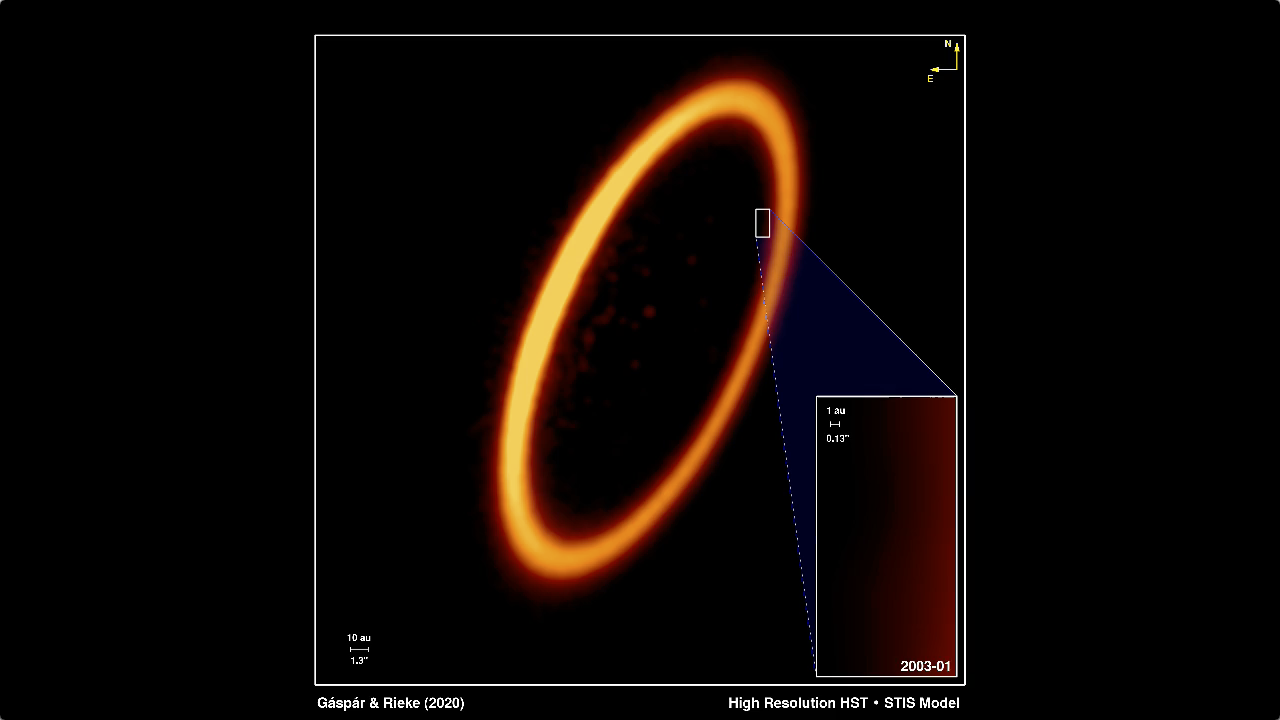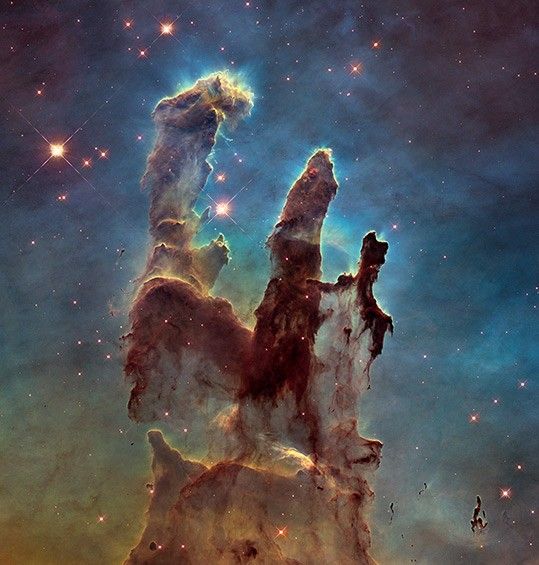1 min read
Illustration of Collision of Protoplanetary Bodies in the Fomalhaut Star System

This artist's illustration depicts the collision of two 125-mile-wide icy, dusty bodies orbiting the bright star Fomalhaut, located 25 light-years away. Astronomers believe that Hubble Space Telescope observations, spanning several years, provide observational evidence for the first-ever detection of such a titanic collision in another star system. What was first thought to be a planet orbiting Fomalhaut eventually faded and disappeared from view in the Hubble snapshots. The interpretation is that the object wasn't a planet at all, but an expanding cloud of dust from a collision between two equally massive bodies. Ballooning to over 200 million miles across, the cloud is now so diffuse it has fallen below Hubble's detection limit. Smashups like this are estimated to happen around Fomalhaut once every 200,000 years. Therefore, Hubble was looking at the right place at the right time to capture this transient event.
About the Object
- R.A. PositionR.A. PositionRight ascension – analogous to longitude – is one component of an object's position.22:57:39.04
- Dec. PositionDec. PositionDeclination – analogous to latitude – is one component of an object's position.-29:37:20.04
- ConstellationConstellationOne of 88 recognized regions of the celestial sphere in which the object appears.Piscis Austrinus
- DistanceDistanceThe physical distance from Earth to the astronomical object. Distances within our solar system are usually measured in Astronomical Units (AU). Distances between stars are usually measured in light-years. Interstellar distances can also be measured in parsecs.The Fomalhaut star system is located 25 light-years away from Earth.
- Object NameObject NameA name or catalog number that astronomers use to identify an astronomical object.Fomalhaut b
- Object DescriptionObject DescriptionThe type of astronomical object.Artist's Illustration of Collision of Protoplanetary Bodies
- Release DateApril 20, 2020
- Science ReleaseExoplanet Apparently Disappears in Latest Hubble Observations
- Credit
Related Images & Videos

Model of Fomalhaut b Dust Cloud
Hubble Captures Protoplanetary Collision in the Fomalhaut Star System This diagram simulates what astronomers, studying Hubble Space Telescope observations, taken over several years, consider evidence for the first-ever detection of the aftermath of a titanic planetary collision...

Model of Fomalhaut b Expanding Dust Cloud
Hubble Movie Captures Protoplanetary Collision in the Fomalhaut Star System This video simulates what astronomers, studying Hubble Space Telescope observations, consider evidence for the first-ever detection of the aftermath of a titanic planetary collision in another star...
Share
Details
Last Updated
Aug 17, 2025
Contact
Media
Claire Andreoli
NASA’s Goddard Space Flight Center
Greenbelt, Maryland
claire.andreoli@nasa.gov



































